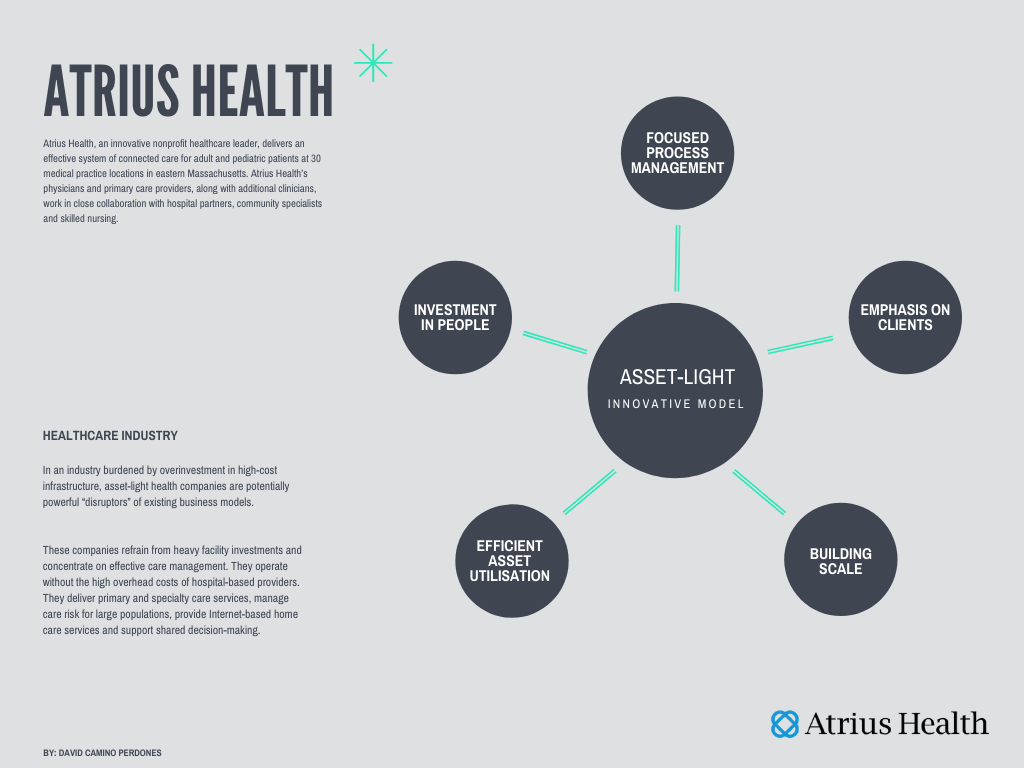An example of successful structural innovation: the asset-light model

…when is possible
An asset-light business model is a model for an organization where the company has relatively few capital assets compared to its operations. The principal objective of this approach is to boost the company’s long-term value by expanding its unique resources.
Every company seeks to pursue its strategy with the lowest possible level of asset ownership, but determining the optimal level is challenging. Asset-heavy models offer superior control, but they tie up significant capital and frequently prove less flexible in a fast-changing environment. By contrast, asset-light business models confer greater flexibility, but it can be tough to manage them, and the risk of leaking intellectual property (IP) or becoming less valuable is greater.
What are the benefits?
- Better Return on Assets. Although asset-light companies on average have lower margins these are usually more than offset by the benefits of lower asset weight.
- Lower Profit Volatility. Companies with high fixed costs rely on revenues to cover those costs, so net income depends on utilization. By contrast, asset-light companies’ costs are more variable relative to their revenues, so profits are less volatile.
- Greater Flexibility. Companies with lower levels of asset ownership are able to respond faster to changing demand, technology advancements, new market opportunities, and supply chain disruptions.
- Higher Scale-Driven Cost Savings. Asset-light models can help companies achieve scale without having to invest capital.
Is always a right option?
Despite the benefits, sometimes a vertically integrated model is a better choice. When coordination, speed, know-how or knowledge sharing is essential -or when core strategic assets are scarce- greater integration can be helpful. Typically, you’ll need to answer two questions:
- Is the asset strategic?
- Is the asset in short supply?
A number of companies have tried to become asset light but have encountered problems in, for example, coordinating suppliers and maintaining critical know-how.
Case study: Healthcare companies
In an industry burdened by overinvestment in high-cost infrastructure, asset-light health companies are potentially powerful “disruptors” of existing business models.
These companies refrain from heavy facility investments and concentrate on effective care management. They operate without the high overhead costs of hospital-based providers. They deliver primary and specialty care services, manage care risk for large populations, provide Internet-based home care services and support shared decision-making.
Its main advantages are:
- They are not burdened by high overhead and facility costs.
- Their business models align with patient/customer needs.
- They are well-positioned for risk.
- They can partner with traditional providers and payers on favorable terms.
Atrius Health: value-based care model
Is a healthcare system without hospitals possible?

Atrius has been able to manage health care spending for its patients, keeping them out of expensive emergency rooms and hospital beds, analyzing patient data to intervene before they get sick and providing care in people’s homes through its Visiting Nurses Association home health care agency. Each nurse has real-time phone access to a geriatric care–trained nurse practitioner who, based on the nurse’s assessment, can order tests (including in-home imaging) and prescriptions and make treatment decisions.
All this has given rise to a new health model in which:
- An asset-light model is achieved whereby only the services needed at any given time are rented.
- More personalised care for each patient.
- The burden on hospitals is reduced.
- The cost of treatment is greatly reduced.
- The most important asset is the people and the operational process they follow.
References
Kachaner, N., & Whybrew, A. (2021, January 8). When “Asset Light” Is Right. BCG Global. https://www.bcg.com/publications/2014/business-model-innovation-growth-asset-light-is-right.
How Atrius Health Is Making the Shift from Volume to Value. Harvard Business Review. (2017, September 1). https://hbr.org/2016/12/how-atrius-health-is-making-the-shift-from-volume-to-value.
Asset-Light and Ready: Physician Groups Embrace Accountable Care. 4sight Health. (2018, September 19). https://www.4sighthealth.com/asset-light-ready-physician-groups-embrace-accountable-care/.

MSc in Computer Science, MSc in Mathematics. Passion for technology and continuous learning.
